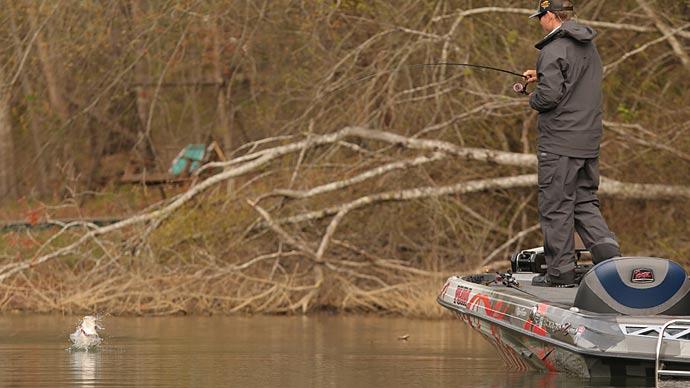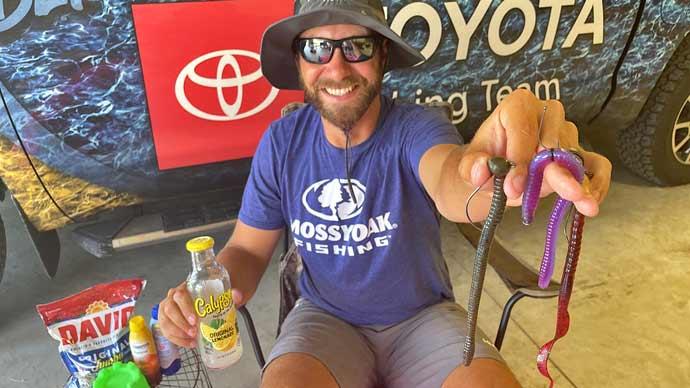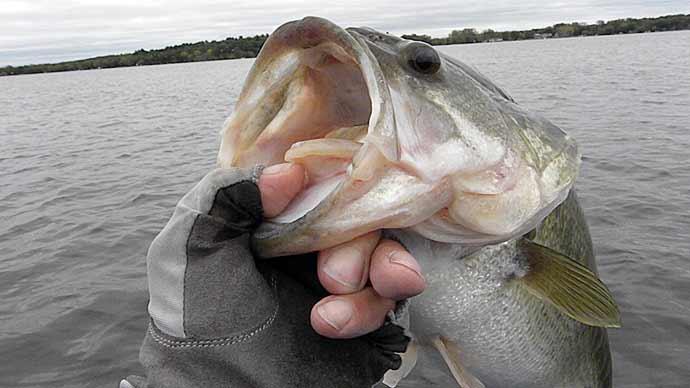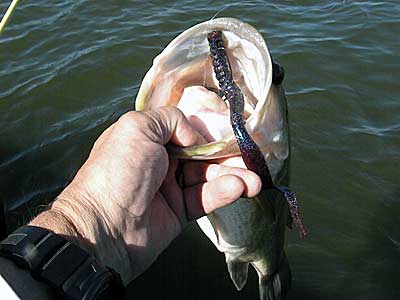
How many of you like to fly under the radar regarding new tactics? That was a question that I asked a few anglers about search baits. My question was: “Let’s say you're getting ready for a tournament on a body of water that you have never been on before. What would you pick as your search bait to help you understand what the bass are doing and where they are located?”
I was able to get an array of answers to this question. Spinnerbaits, crankbaits, and topwaters all were dominant answers coming up multiple times, but there was one answer that caught me off guard a little. One angler told me that his search bait from time to time was a swim worm. Being taken back by this answer, I asked why? His reply was "simply because it took you off guard, which is the reason behind my answer. No one else is doing it."
Swim worms are nothing new. They have been around for years, but they are baits guys are fishing and aren't talking about as they are keeping this tactic secret. Example MLF angler Jeff Kriet has been fishing a swim worm for a year as a tactic to get tournament ready. If it were not for the early MLF cup events where he was taped using a swim worm, he might have still been able to keep it a secret.
Jeff's reasoning behind the swim worm tactic “is it flies underneath the radar. It can be treated just like a spinnerbait in how you fish it. Make your cast, count it down a few feet, and slowly reel the worm back to the boat. Your goal is to tick the cover with your worm just like you would with a spinnerbait on its way back to the boat. If you see a clump of weeds or a stump on the way, you can kill the bait and let it flutter down, hopefully triggering a bite on the fall. The main difference between the two is that the swim worm is more subtle than a spinnerbait, but when it comes to fishermen, the swim worm is a choice that few will pick.
Keys Behind The Setup
"Don't overcomplicate it. Keep it simple,” says Jeff. “Most of the time, I would say about 90% of the time, I'll use a 3/16oz tungsten weight on the line, unpegged. I use a 4/0 Gamakatsu G Finesse Hybrid offset hook, not an EWG hook. My rod of choice for this tactic is a Denali 7ft MH Lithium Pro baitcast rod that is teamed with a 6.3:1 baitcaster reel spooled with 15-pound fluorocarbon line.
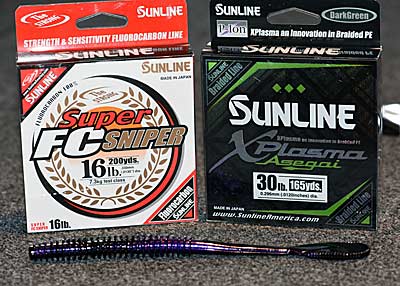
Another point that Kreit wanted to talk about is the hook set. Kriet adds, "when fishing a swim worm, you'll start to feel the rod load up when you get a bite. Don't stop reeling to set the hook. Just keep reeling and lean into the fish like you would if you were fishing other swimming baits. Keep your bait moving and let the bass hook himself.”
Regarding worms, there are a few leading players on the market. Jeff helped Big Bite Bait develop and introduce its Tour Swim Worm a few years back. Other players include Zoom and Strike King. All companies offer baits that have particular actions and make-ups.
One unique thing about the Big Bite Tour worm is the tail. Out of the package, the tail is like a paddle tail worm, which gives the tail more of a thumping action. It's great to use in dirty water conditions or when you need to call attention to your worm when fishing in cover.
If you want to make the tail into a swimming tail, unzip the tail section along the dotted line, and you now have a swim tail that will call bass to the worm. The Big Bite Tour worm is offered in two assorted sizes to match your fishing situations. The 5.5" is used in clearwater conditions representing baitfish swimming in these waters. When fishing in off-colored or dirty water conditions, upsize your worm selection to the 7.5.” It will create a bigger profile and give off more action helping the bass track down and locate your worm.
Expand Your Swim Worm Arsenal
Pockets of swim worm fishermen have been finding different niches to use swim worms. Heavy cover is getting some attention. Weedy cover such as reeds and lily pads are areas where a swim worm can excel. In these cases, you'll need to upsize your equipment a little to manage the cover factor. The line will need to be adjusted as well.
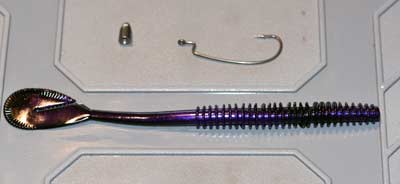
When fishing weed flats, 15-pound fluorocarbon is the line size choice. In heavier cover situations, some are adjusting up to 20-pound fluorocarbon when faced with fishing clear water conditions. Still, when faced with dirty water conditions, anglers choose to fish braided line instead. This decision will come down to the angler and the conditions that they are fishing around.
Another consideration to make in these changing conditions is your hook choice. For example, if you're going to a larger line size or conditions, you'll want to look at your hook options.
If I'm going to a braided line selection, I'll switch to a Gamakatsu Superline EWG hook. This hook can take the stress that a braided line can add. Another adjustment I make is to peg my sinker. I want my bait and sinker to stay together.
Fishing over the weeds did not cause a problem because the bait was moving, and the two would stay together. However, when you're fishing thicker cover, you have a greater chance of separating your hook and sinker. It starts to cause hookup problems as you'll have to overcome the weight of the sinker and the cover if the line and the sinker get separated before your hook set.
In some cases, you want to up your sinker size a little. It will give your bait a faster fall rate and help trigger more strikes. However, be careful not to overpower your setup. I'm talking about a small incremental increase such as going from a 3/16oz sinker to a 1/4oz. You can also do the opposite and downsize your sinker to a 1/8oz to give your baits a slower gliding fall and look. The best thing in these cases is to let the bass tell you what they want. I have fished both riggings, and the bass will seem to prefer one over the other on any given day.
It pays to be observant when fishing heavier cover with swim worms because you'll have more pockets and openings to target on your casts. Use this to your advantage as you'll have more areas to target. A free-falling worm is a perfect way to trigger bites and cover water simultaneously.
I hope this has introduced a new tactic for you to add to your bag of tricks this year. Swim worms aren't a mainstay for many, but the ones relying on this presentation use it as a go-to tactic when they have to put bass in the boat. It's simple to fish, and you don't need special equipment to pull this presentation off. Easily it works. What more do you need?
BassResource may receive a portion of revenues if you make a purchase using a link above.


